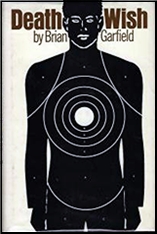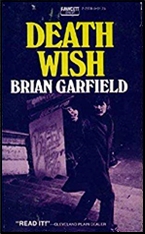Mon 6 May 2019
Stories I’m Reading, Selected by David Vineyard: MICHAEL GILBERT “The Unstoppable Man.”
Posted by Steve under Stories I'm Reading[3] Comments
MICHAEL GILBERT “The Unstoppable Man.” Short story. Inspector Hazelrigg. First US publication in Ellery Queen’s Mystery Magazine, February 1954. First published in John Bull, UK, 19 November 1949, as “Amateur in Violence.†First collected in Amateur in Violence (Davis, US, paperback, 1973). Reprinted many times. Film: The Unstoppable Man (Argo, UK, 1960), reviewed here.
Those are the final words of Michael Gilbert’s Inspector Hazelrigg in this tale, and if you have ever read this oft anthologized story, you will have little trouble recalling them. In fact, they likely have the same impact now as you recall them they did when you first read them in one of the best known stories in Gilbert’s long career.
I suppose there are some who think of Gilbert as primarily a quiet writer, a British solicitor who wrote a certain kind of story, a far cry from his more violent American contemporaries. Of course that isn’t true. The truth is, Gilbert always wrote with a quiet savagery that belied his civilized settings and background. He had a fine eye for the darker, hidden side beneath the civilized soul of his fellow Brits, whether they were spies, solicitors, school masters, actors, prisoners of war, or policemen.
Gilbert not only produced fine puzzles and character studies, but when he wanted to, he could chill to the bone, producing nerve wracking suspense and high adventure. Think of some of those icy Calder and Behrens stories, some of the adventures of Patrick Petrella, and no few of the novels, that could suddenly go as dark and violent as any of their American cousins.
This was the first story of Gilbert’s I ever read, and I was a devout follower ever after.
“The Unstoppable Man†first appeared in this country in Ellery Queen’s Mystery Magazine in February 1954 in an issue that touted it contained no reprints. Among the all-new material were an Anthony Boucher story, one by Victor Canning, and others by Roy Vickers, Zelda Popkin, Phyllis Bentley, and Youngman Carter. Even in that company, though, Gilbert’s tale sticks out.
It’s a simple story. It opens with the Inspector describing the sort of man who would frighten him as a pursuer.
The amateur in question is Mr. Collet, managing director of a shipping firm who son has been kidnapped and wants to know whether or not kidnappers can be trusted to return their victim alive. Mr. Collet is in troublem and the kidnappers have his son.
The kidnapper is Joe Keller with his gang. Keller is a man who has kidnapped and tortured children before. He is holding Mr. Collet’s son and the police dare not rush the place for fear they will kill the child.
Mr. Collet has one request of the police, get him and his kit into the bedroom with his son before they rush the house. He will take care of the rest, though he doesn’t let on how, since he doesn’t want a gun. The police agree and get Collet into the room with his son. Their chances are slim as Keller and his gang will go for the child as soon as the police move in. There is no reason for them not to kill father and son at that point.
All that stands between the child and death is Hazelrigg’s “amateur in violence,†the quiet but strangely assured Mr. Collet.
I won’t spoil if for you if somehow you have missed this little gem from Mr. Gilbert from his Inspector Hazelrigg series. It’s such a good ending that Gilbert used variations on it in a couple of books, including a crossover novella with Calder, Behrens, and Patrick Petrella, and one of his early novels. I should point out that every time Gilbert delivers the goods, but perhaps never with quite the impact of this version.
I can only say without giving it away, that the ending is a corker, savage, shocking, and memorable.
You may never read Michael Gilbert quite the same way again. Whatever else you won’t forget Gilbert’s “amateur in violence.†You may even find you feel a little pity for Joe Keller and his gang … they never had a chance.

